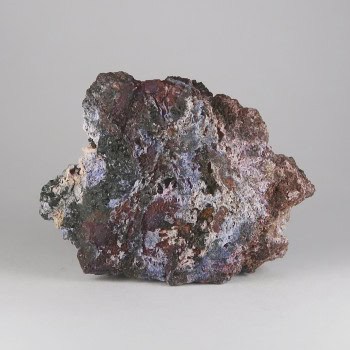Phosphosiderite
Phosphosiderite is a rare phosphate mineral that typically appears as opaque to translucent crystals with shades of violet, lavender, pink, or brown.
Showing the single result
Information about Phosphosiderite
Phosphosiderite is a rare phosphate mineral that typically appears as opaque to translucent crystals with shades of violet, lavender, pink, or brown.
The mineral often forms in botryoidal, massive, or granular habits, and it can also crystallize in prismatic forms.
Uses and History
Phosphosiderite is not commonly used in industrial applications but is prized by mineral collectors due to its rarity and aesthetic appeal.
It has been studied in the context of phosphate mineralogy and can be used as a source of iron in specific contexts.
Phosphosiderite was first described in the 19th century and was named after its key elements, phosphorus and iron (Greek “sideros” meaning “iron”).
The mineral is relatively rare and is typically found in secondary phosphate deposits that have been altered by the presence of iron.
The type locality of Phosphosiderite is Kalterborn Mine, Eiserfeld, Siegen, Siegen-Wittgenstein, Arnsberg, North Rhine-Westphalia, Germany.
Mineralogy
Various, wide ranging colours from purple to violet, red, pink, yellow, brown, peach
Hazards and Warnings
Mineral collectors should wash their hands after handling specimens, to avoid any exposure to potential toxins.
Almost all rocks, minerals (and, frankly, almost all other substances on earth) can produce toxic dust when cutting, which can cause serious respiratory conditions including silicosis.
When cutting or polishing rocks, minerals, shells, etc, all work should be done wet to minimise the dust, and a suitable respirator or extraction system should be used.
Translations
Arabic:
Hindi:
Portuguese:
- Fosfosiderite
Bengali:
Indonesian:
Punjabi:
English:
Italian:
- Fosfosiderite
Russian:
- Фосфосидерит
French:
Japanese:
Spanish:
- Phosphosiderit
German:
- Phosphosiderit
Korean:
Thai:
Gujurati:
Mandarin Chinese:
- 斜紅磷鐵礦
Urdu:

